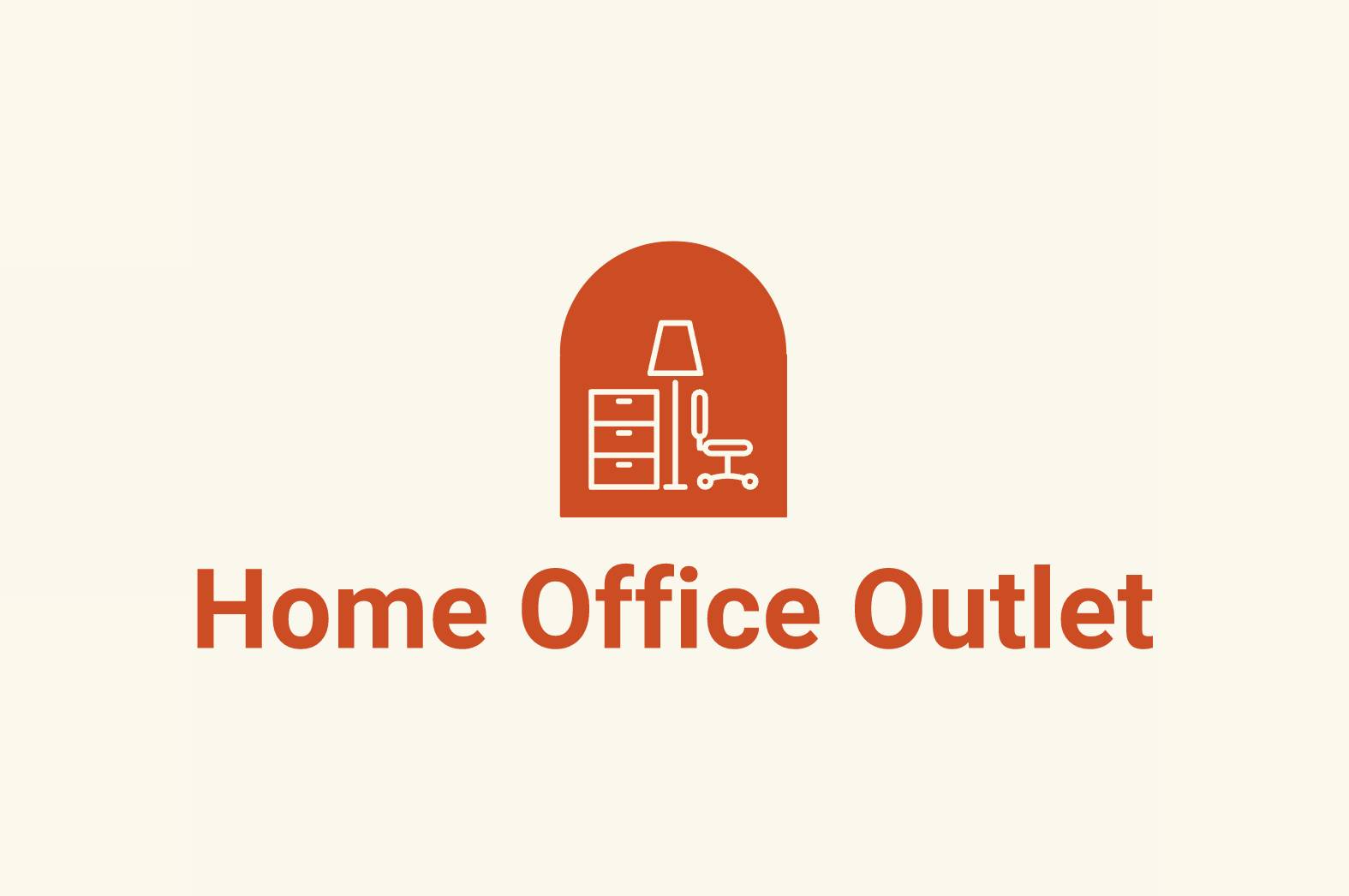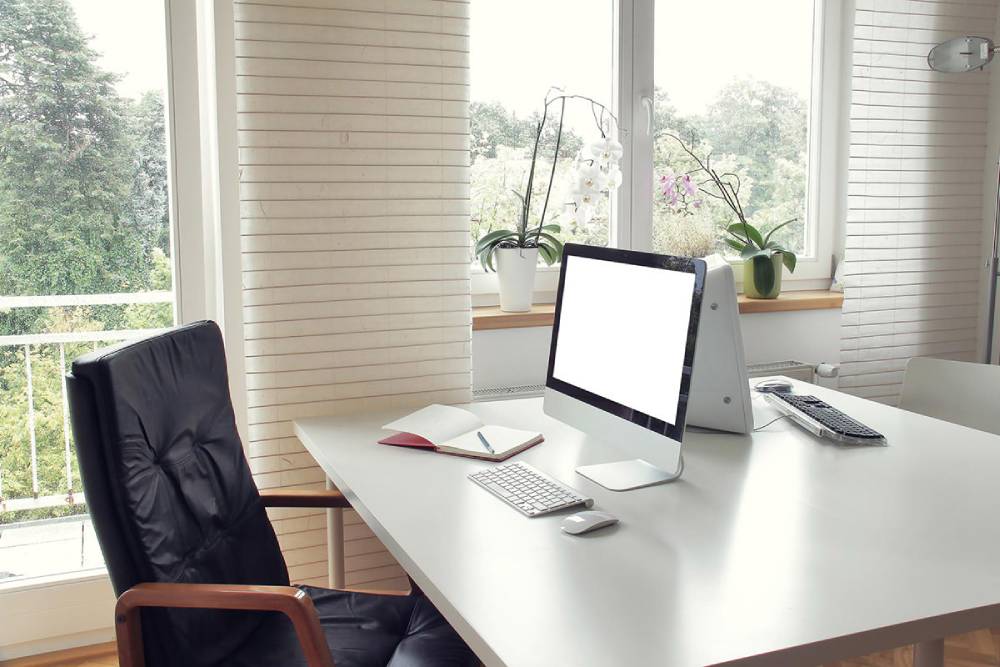
At some point, almost everyone must carry work with them to their homes, whether it is a stack of documents or files on a laptop. If you don’t work in an office, you may need a designated area to organise your household’s letters and invoices.
Whatever your requirements, it’s likely that you’ll need a home office. Whether it takes the form of a whole room, a corner, or a pull-out shelf is all up to you.
How should you design your modern home office?
Ideas for research
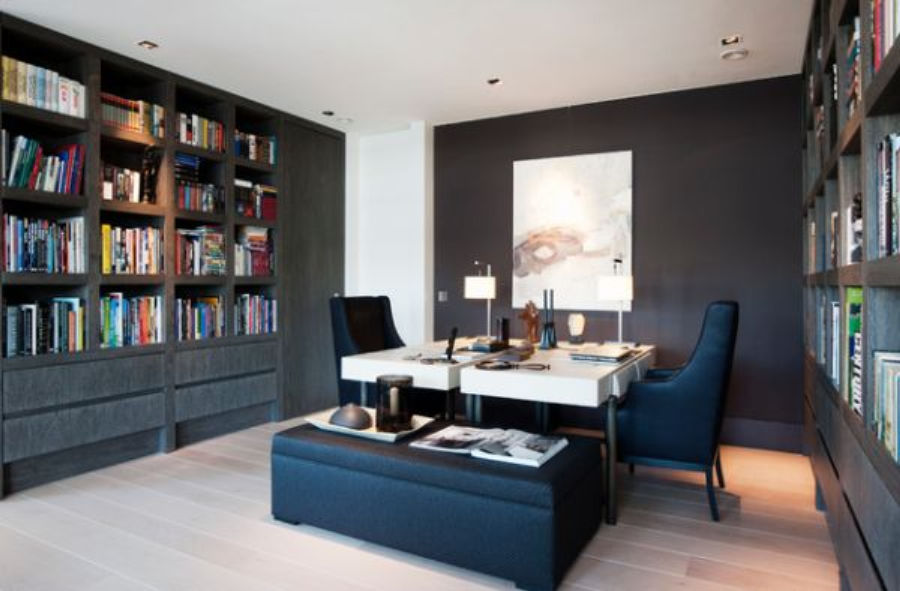
Home office design: Ideas for research (Source)
Look for ideas before coming up with your own design. You may start your web search for contemporary home office concepts. Try a quick picture search on Google or begin saving home office decor inspiration on Pinterest. There are print periodicals with pictures of interior design as well.
Ideas might appear out of the blue. What about nature inspires you? Consider using the hues and forms found in these natural features. Do you have a favourite historical period? Perhaps you could use elements of that era’s style in your design.
Of course, if you’re a qualified interior designer, this is also the ideal opportunity to learn more about your client’s preferences.
Establish a mood board
A picture collage representing your design ideas is an interior design mood board.
You may create a mood board to help you organise your thoughts while building your own place. A mood board is a fantastic tool for getting feedback from clients and communicating your ideas to them.
List your essentials
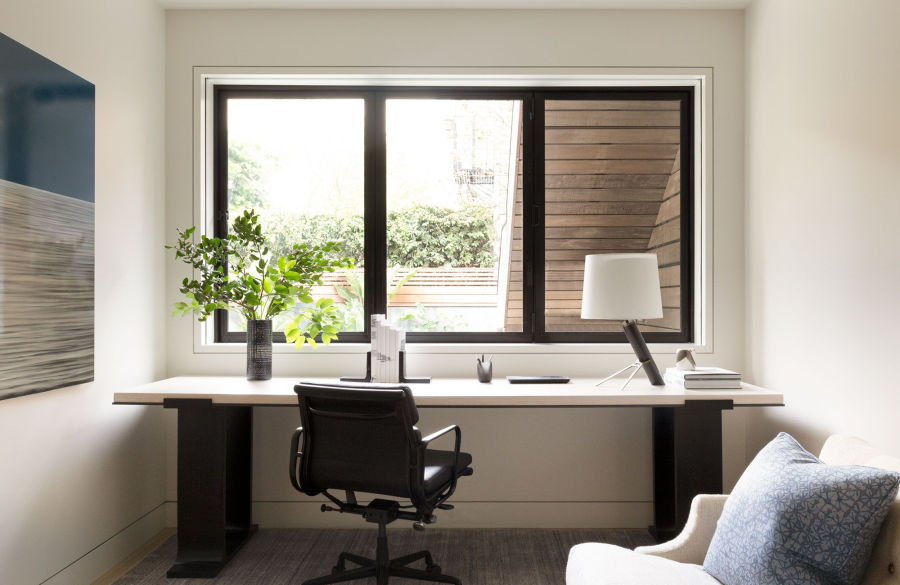
Modern home office design: List your essentials (Source)
Make a list of the things you need before you start deciding what you desire. This may consist of necessary office equipment like a desk and shelves. Additionally, it may include non-negotiable design components. Put a water element on the list if it is crucial to your idea of a contemporary home office.
Be practical
We understand that you’re enthusiastic about the fresh appearance you’re going to give the space. But keep in mind that a home office is, first and foremost, a place to work. You must put practicality first.
However, it does not imply that your design must be monotonous. Simply said, it implies that the core of your design should be usable. Start with the specifications of a contemporary workstation when creating your home office, and then use your imagination from there.
Examples of Modern Home Office Design
Location
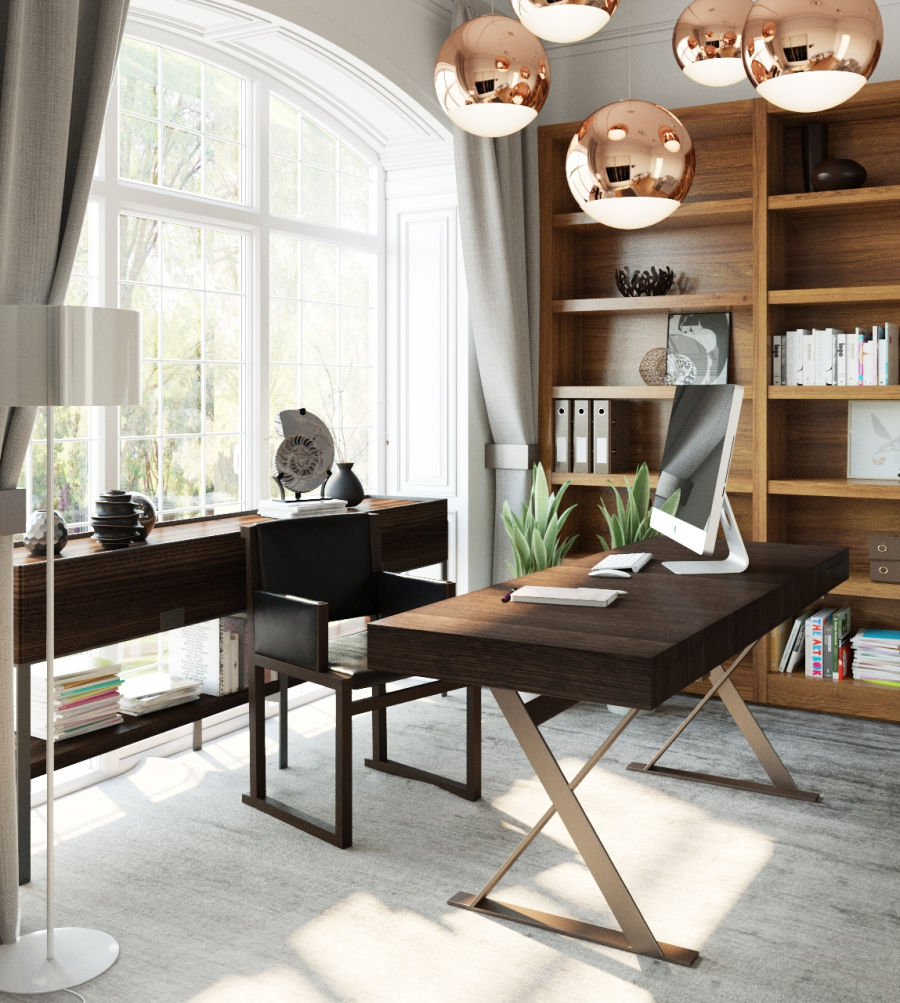
Home office design: Location (Source)
Where should the desk be located in a home office? No matter how wonderful a desk may seem in a certain location, if it’s dim or unpleasant, nobody will want to sit at it.
The workstation should be positioned as near to a source of natural light as you can. Consider where you’ll put a floor lamp or desk lamp if the room doesn’t have a window that provides enough light. Nothing on the desk should be in the shadows.
Take into account your own preferences if setting up a workstation in front of the window is a possibility. Ask your customer, if you’re a professional, how it feels to spend all day looking out a window.
Make sure the area surrounding the home office workstation is large enough to enable the user to stretch and move about.
Storage
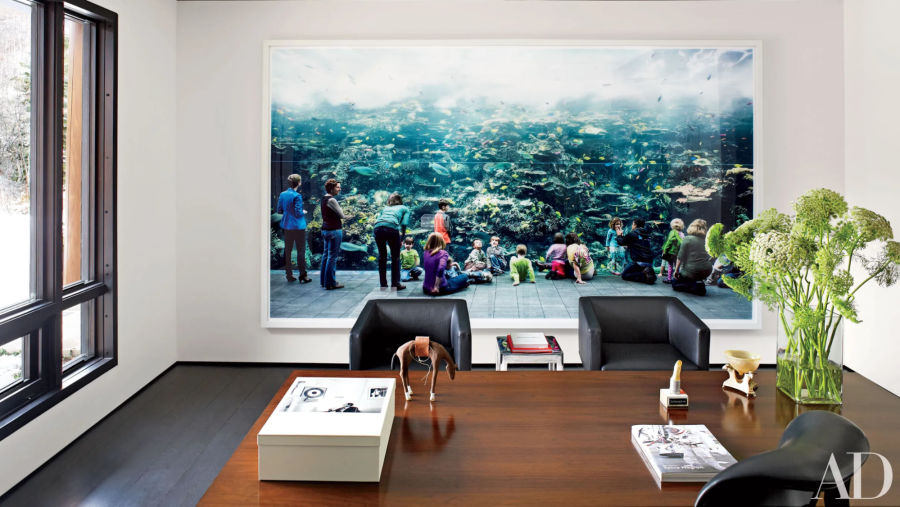
Storage in modern home office design (Source)
There must be plenty of storage space in a workplace. Storage space may be required for documents, office supplies, computer equipment, and other items. Make sure your design includes enough storage choices, some of which should be accessible from the workstation.
Small spaces or even converted spaces like an attic are often used to build home offices. In this situation, your design should maximise the limited area.
Less may be more. It can sound contradictory, but a few bigger pieces will fit a small area better than a lot of little ones. The floor area in a modest home office is valuable. Instead, employ vertical space with a foldable desk or floating shelf unit.
With furniture that serves numerous purposes, such as a bench with drawers below or a floor lamp with shelves at its base, you may sometimes save room.
Just because the space is tiny shouldn’t stop you from making big decisions. A few bold items can make a big impact.
Keep it comfortable
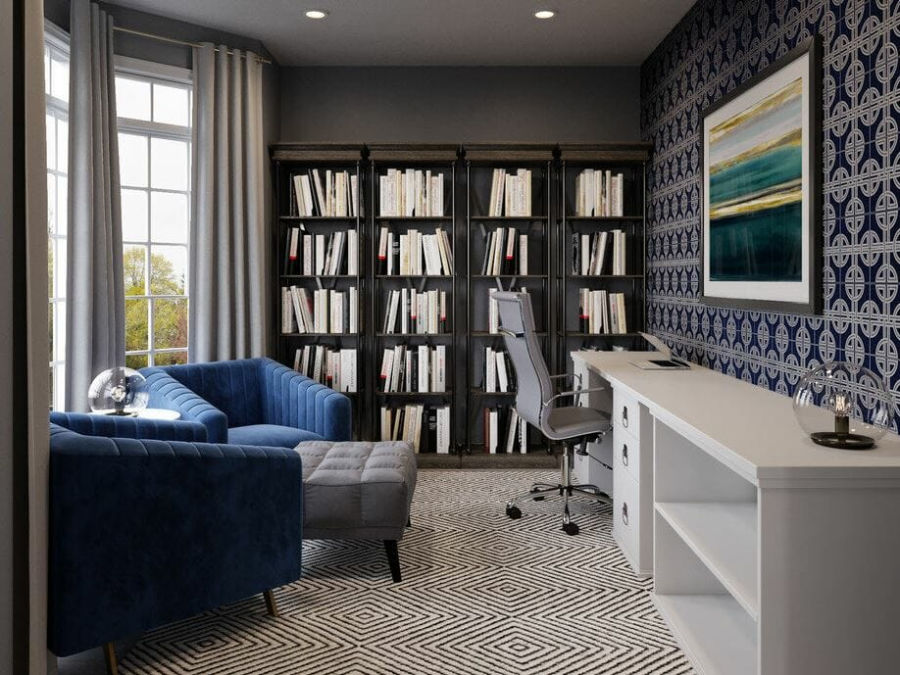
Keep it comfortable (Source)
Designing a workspace should take ergonomics and comfort into consideration. A chair that is more attractive than comfortable has its time and place. It’s not your home office.
The good news is that comfy seats come in a variety of designs and hues, so you don’t have to settle for a plain, typical office chair. Make sure it’s a chair that you or your customer could comfortably sit in for many hours every day.
These days, standing or adjustable desk is popular. Find out whether your customer is interested in this or if a conventional office workstation would be more comfortable for them.
Make space for electronics
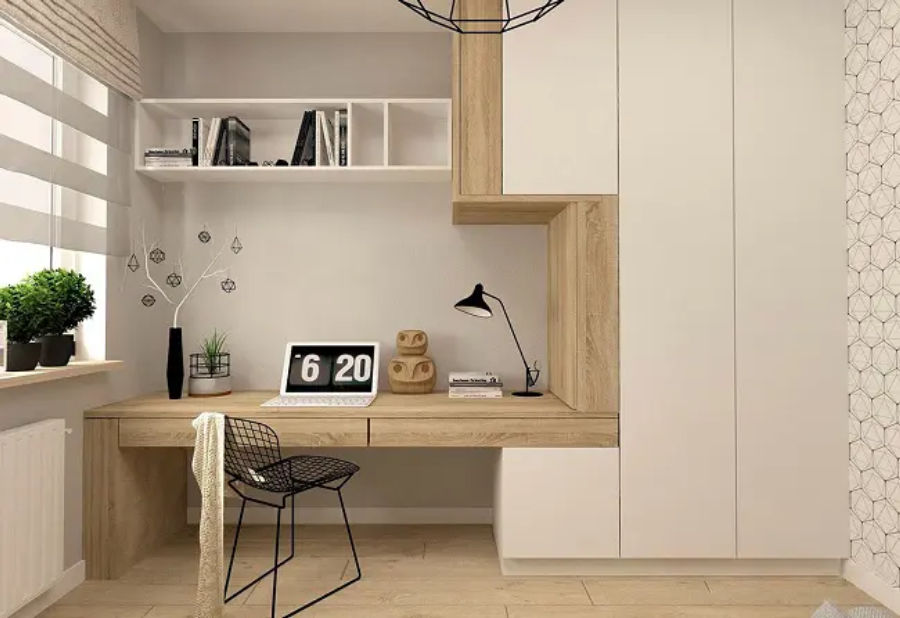
Make space for electronics in modern home office (Source)
Most modern home offices don’t need a long row of file cabinets or a lot of paper storage. They need room for contemporary technologies instead.
Most likely, your customer has many computer monitors. Select a desk that can fit their workstation after discussing it with them.
Unattractive electrical wires cross the room. Think about where the outlets are and where the wires need to go to get to the computer, monitor, or printer.
A few techniques exist for concealing unsightly cables. Running them behind furniture is the most typical practice. Some designers may even paint them the same colour as the wall.
You can conceal more than just that. Printers and other office equipment may be hidden away out of the way so that your design can take centre stage.
Make a list of all the technology you or your customer will need before you begin building your home office area. Know where you can place each large object or store it.
Use lighting to create the right atmosphere
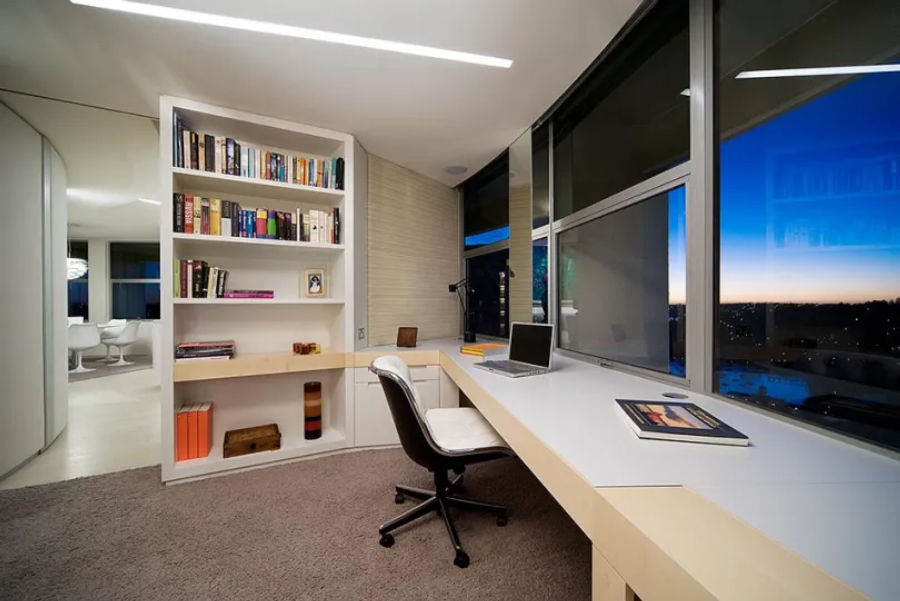
Use lighting to create the right atmosphere (Source)
Although it sometimes goes unnoticed in interior design, lighting may have a significant influence.
In a workplace, it’s obviously necessary to be able to see properly, but the goal of ideal lighting extends beyond that. According to research, light has an impact on alertness, mood, and cognitive function.
For instance, under strong light, individuals are more attentive. While you may prefer softer lighting in a room designed for relaxation, such as a living room, you want to stay alert while working from home.
Your view may be affected by the lighting. People who are exposed to dim, cool-coloured light are less optimistic.
Consider how the workplace will seem at all times. The ideal lighting for an office for a modern home office design is natural light, but it should also be a welcoming place to work at night.
Use colour to boost productivity
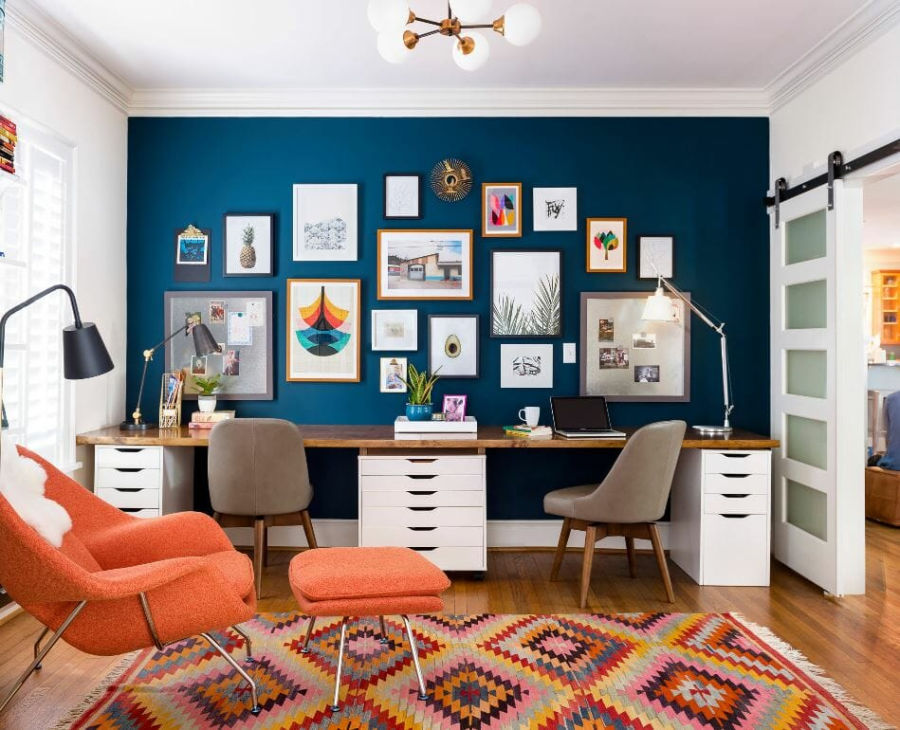
Use colour to boost productivity (Source)
Offices often have plain white walls and neutral-coloured furnishings. Feel free to add a splash of colour to your workplace decor, but keep in mind that colour might influence how an office user feels.
Incorporate natural elements
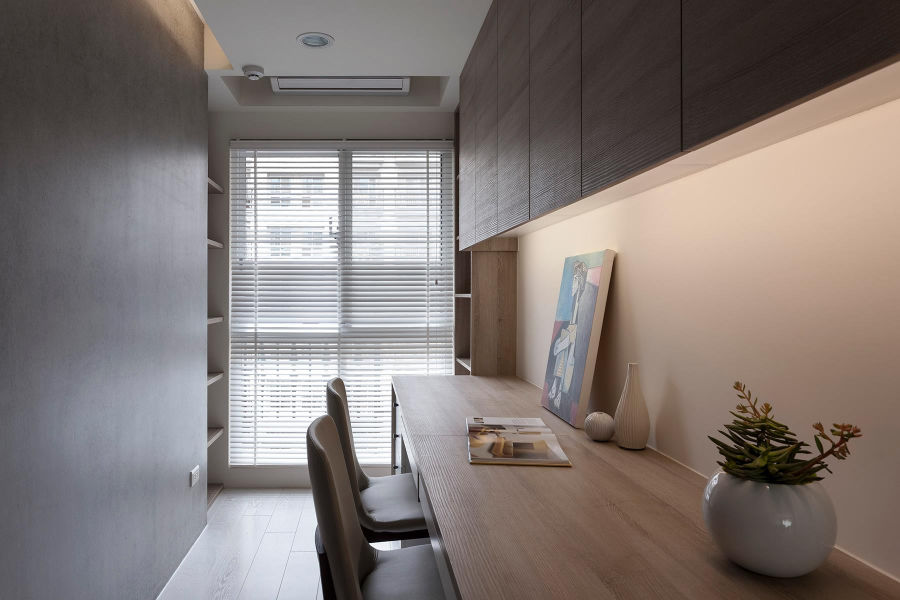
Incorporate natural elements (Source)
Incorporating natural elements into the space is now one of the major trends in modern home office design. Even if we spend the whole day working inside, people have a natural need to interact with nature.
This design aesthetic is also known as biophilic design. It can include making use of natural light and circulation, packing the area with plants, or introducing aquariums or other aquatic elements.
We can improve our happiness, mental health, and cognitive performance through biophilic workplace design.
Conclusion
As more individuals choose to work from home on a full-time basis, the need for contemporary modern home office design will only increase. You may incorporate one of our ideas to create the perfect design for your home office.
